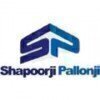Filter interviews by
Idom Senior Geotechnical Engineer Interview Questions and Answers
Idom Senior Geotechnical Engineer Interview Experiences
1 interview found
I applied via Approached by Company and was interviewed in Apr 2024. There were 2 interview rounds.
(4 Questions)
- Q1. Tell me about yourself
- Q2. Explain about your work Experience
- Ans.
I have over 10 years of experience in geotechnical engineering, working on various projects including foundation design, slope stability analysis, and ground improvement techniques.
Managed geotechnical investigations for large-scale infrastructure projects
Performed foundation design calculations for high-rise buildings
Conducted slope stability analysis for highway embankments
Implemented ground improvement techniques su...
- Q3. Explain about Liquefaction
- Ans.
Liquefaction is a phenomenon where soil loses its strength and stiffness due to increased pore water pressure during an earthquake.
Liquefaction occurs when loosely packed, water-saturated sediments lose their strength and behave like a liquid.
It can lead to ground settlement, tilting of buildings, and even landslides.
Common in areas with loose, sandy soils, such as coastal regions or river deltas.
Examples include the 1...
- Q4. Explain about Pile and shallow foundation design
- Ans.
Pile foundations are deep foundations that transfer loads to deeper, more competent soil or rock strata, while shallow foundations transfer loads to the near-surface soils.
Pile foundations are used when the soil at shallow depths is not capable of supporting the structure's load.
Shallow foundations are typically used for smaller structures with light loads and where the soil is strong enough to support the load.
Pile fo...
(1 Question)
- Q1. What is your expectation
Top trending discussions






Interview questions from similar companies

Interview Questionnaire
1 Question
- Q1. Hard core techanical

I applied via Naukri.com and was interviewed in Feb 2021. There were 3 interview rounds.
Interview Questionnaire
2 Questions
- Q1. Project related questions.
- Q2. Scenario based technical questions
Interview Preparation Tips
The first technical was conducted by offshore lead and lasted around an hour
The second one involved manager ,senior manager from onshore along with lead and was completely technical.

I applied via Referral and was interviewed before Jan 2021. There were 5 interview rounds.
Interview Questionnaire
4 Questions
- Q1. What do you want to do in 5 years
- Q2. What is glass
- Ans.
Glass is a solid, transparent material made by heating a mixture of silica and other materials.
Glass is a non-crystalline, amorphous solid
It is made by heating a mixture of silica, soda ash, and lime
It can be molded into various shapes and sizes
It is used in windows, mirrors, lenses, and containers
Different types of glass include tempered, laminated, and stained glass
- Q3. What is graphene
- Ans.
Graphene is a thin layer of pure carbon arranged in a hexagonal lattice.
It is the thinnest material known to man
It is a good conductor of electricity and heat
It is incredibly strong and flexible
It has potential applications in electronics, energy, and medicine
- Q4. What is your expectations
Interview Preparation Tips

Senior Engineer Interview Questions & Answers
Megha Engineering & Infrastructuresposted on 20 Dec 2020
I applied via Naukri.com and was interviewed in Nov 2020. There was 1 interview round.
Interview Questionnaire
4 Questions
- Q1. What is the previous job role ?
- Q2. What is the percentage of bitumen in DBM ?
- Ans.
The percentage of bitumen in DBM varies depending on the specific mix design and project requirements.
DBM stands for Dense Bituminous Macadam, which is a type of road construction material.
The percentage of bitumen in DBM typically ranges from 4% to 6% by weight.
The exact percentage of bitumen is determined based on factors such as traffic load, climate conditions, and desired durability.
Higher percentages of bitumen a...
- Q3. Why you want change your company ?
- Q4. What is your salary expectation ?
Interview Preparation Tips

Senior Engineer Interview Questions & Answers
Megha Engineering & Infrastructuresposted on 17 Feb 2021
I applied via Walk-in and was interviewed in Aug 2020. There was 1 interview round.
Interview Questionnaire
1 Question
- Q1. ELSR MEANS
Interview Preparation Tips

Senior Engineer Interview Questions & Answers
Megha Engineering & Infrastructuresposted on 14 Jul 2017
I appeared for an interview before Jul 2016.
Interview Preparation Tips
Duration: 4 hours 5 minutes
Round: Test
Duration: 2 hours 5 minutes

Senior Engineer Interview Questions & Answers
Megha Engineering & Infrastructuresposted on 23 Oct 2020
I applied via Recruitment Consultant and was interviewed in Apr 2020. There were 3 interview rounds.
Interview Questionnaire
1 Question
- Q1. About HT/LT,Motor/Feeder & Substation Errection & Commission.
Interview Preparation Tips

Interview Questionnaire
5 Questions
- Q1. Seismic design of building, criteria, type of checks in building with respect to seismic, analysis approach
- Q2. Pile and foundation detail, structural system in building, shear wall, dual system implications
- Q3. Steel structure- Class of section, connection detail, slender member design criteria
- Q4. Building irregularities type
- Q5. Nature of scope of work performed, understanding of coordination approach, software knowledge


(2 Questions)
- Q1. About the past projects, About the current projects Latest stack based
- Q2. Regarding involvement in a project.
(2 Questions)
- Q1. Basic question about the background
- Q2. CTC discussion, About the company, Team and culture.
Interview Preparation Tips
Idom Interview FAQs
Tell us how to improve this page.
Idom Interviews By Designations
- Idom Piping Stress Engineer Interview Questions
- Idom Tekla Designer Interview Questions
- Idom Electrical Engineer Interview Questions
- Idom Hydraulic Engineer Interview Questions
- Idom Design Engineer Interview Questions
- Idom Electrical Design Engineer Interview Questions
- Idom Senior Geotechnical Engineer Interview Questions
- Idom General Instrumentation Engineer Trainee Interview Questions
- Show more
Interview Questions for Popular Designations
- Geotechnical Engineer Interview Questions
- Structural Engineer Interview Questions
- Piping Engineer Interview Questions
- Civil Structural Engineer Interview Questions
- Senior Structural Engineer Interview Questions
- Design Engineer Interview Questions
- Lead Mechanical Engineer Interview Questions
- Junior Structural Engineer Interview Questions
- Show more
Idom Senior Geotechnical Engineer Interview Process
based on 2 interviews
Interview experience
Interview Questions from Similar Companies
|
Piping Designer
58
salaries
| ₹4 L/yr - ₹15.2 L/yr |
|
Piping Engineer
18
salaries
| ₹7.3 L/yr - ₹21 L/yr |
|
Structural Engineer
14
salaries
| ₹6 L/yr - ₹25 L/yr |
|
Electrical Engineer
13
salaries
| ₹8 L/yr - ₹14 L/yr |
|
Civil Structural Engineer
12
salaries
| ₹6.5 L/yr - ₹16.5 L/yr |

Megha Engineering & Infrastructures

Shapoorji Pallonji Group

Alstom Transportation

Tata Technologies
- Home >
- Interviews >
- Idom Interview Questions >
- Idom Senior Geotechnical Engineer Interview Questions








